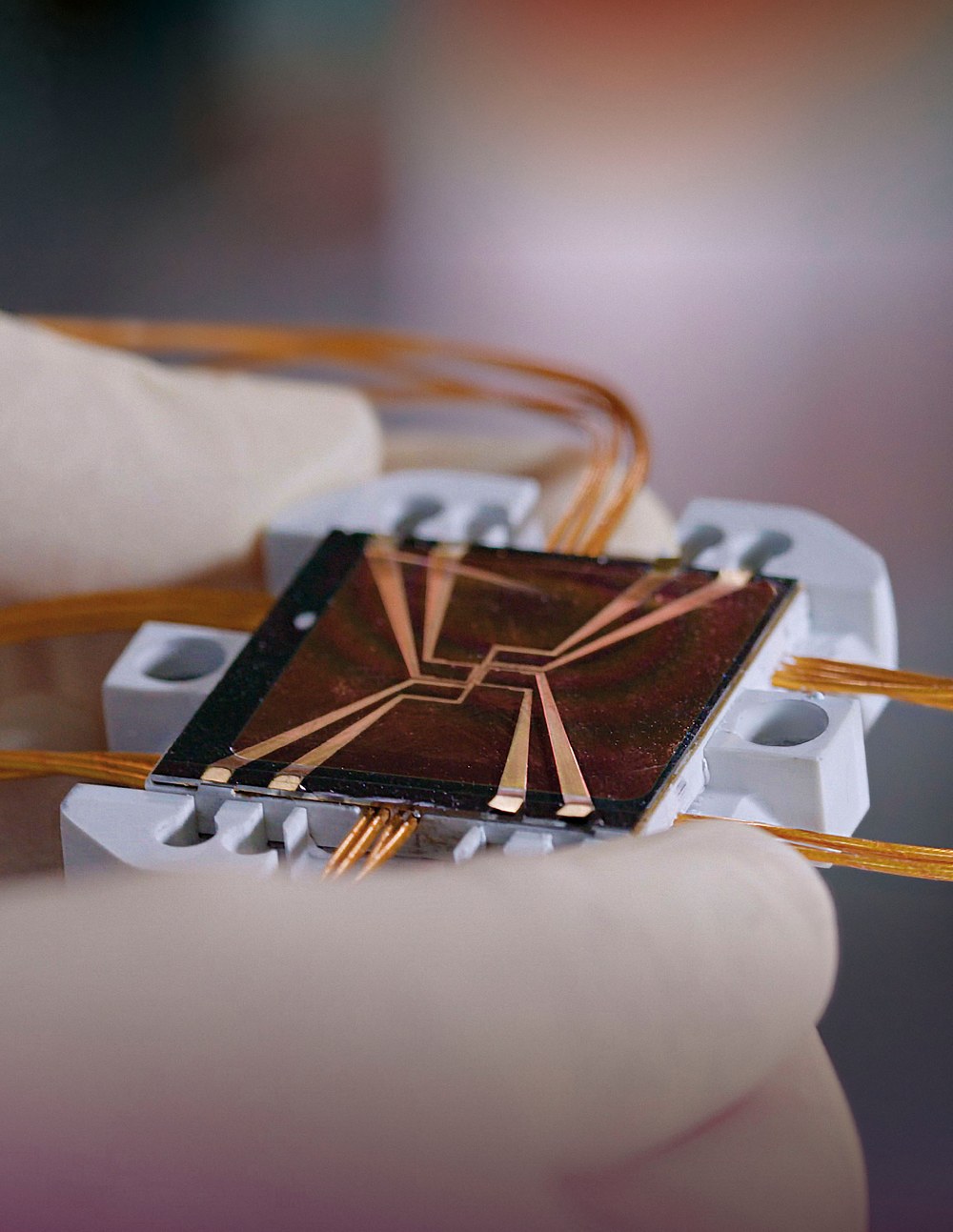DLRmagazine 168 – Qubits hit the ground running
A chip can be the heart of a quantum computer. Atoms or ions can be separately trapped on it. These can serve as information carriers, so-called qubits or quantum bits. Quantum computing is expected to open up new opportunities in materials research, medicine and the energy and transport sectors. It is also expected to revolutionise artificial intelligence, interception-proof cryptography techniques and satellite-based communications and navigation. Sounds promising! The latest issue of the DLRmagazine provides insights into this new world and introduces the DLR Quantum Computing Initiative, where research institutions, industry and start-ups are jointly developing hardware, software and applications.


